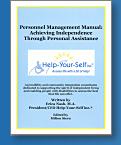Prevention of Injuries
Our Prevention of Injuries program addresses the need to reduce preventable life altering injuries and deaths. We propose to instill the desire and awareness in young adults to take responsibility for their actions, and provide them with the tools they need to make informed choices. To accomplish this, we have developed a curriculum and offer Prevention of Injuries Classes. In addition to our classes for young adults, we advocate to alter driving license requirements and introduce driving education that is effective in preventing injuries.
The Problem
The fifth most common cause of death in the U.S. is unintentional injuries and among people under the age of 35, it is the most common cause of death. Recent studies by the National Center for Health Statistics (NCHS), the Center for Disease Control (CDC) and The National Center for Injury Prevention (NCIP), show vehicle crashes accounting for 47% of injuries, followed by falls, gunshots and recreational sports. Vehicle crashes cause about three million injuries and 42,000 deaths per year of which 7,600 are under 18 years of age. Over 50% of those who die do not wear seat belts, alcohol contributes to 38% of cases, and aggressive driving causes two-thirds of fatal crashes. On average a teen driver is seven times more likely to crash and one dies on the road every 91 minutes. According to AAA statistics, each year, road rage incidents increase 7%, cause at least 200 deaths and 12,000 injuries. In 2005, 5,859,000 people were non-fatally injured in motor vehicle crashes.
Over the years, many people have tried to address injury prevention and developed programs to reduce accidents. Past techniques have had limited impact either because of their approach or because of their limited scope. For example:
- Nationally prominent organizations aim to reduce injuries by providing information on websites.
- Several non-profit organizations distribute brochures of crash related facts and figures.
- Prominent psychologists, such as Dr. Deffenbacher, aim to reduce injuries by using relaxation techniques on self-reported angry drivers.
- Government laws enforce the use of seatbelts and speed limits.
Dr. Haddon, an expert in injury prevention, developed a Matrix which emphasizes that injuries are 'not the result of a single cause, but a chain of circumstances and therefore, offer multiple opportunities to establish prevention countermeasures'. According to Dr. Haddon, it is necessary to focus on the individual, the object, as well as the environment. Help-Your-Self believes that this comprehensive approach is an effective way to reduce injuries.
Help-Your-Self's Solution
Government enforcement of seatbelt and vehicle safely laws is important and a good attempt towards reducing accidents. However, we believe there is a greater chance to effectively prevent vehicle crash injuries by requiring drivers to be educated about the consequences. In D.C., M.D. and V.A. there currently is no such requirement. The Help-Your-Self Prevention of Injuries program aims to reach the 65 million citizens who drive and those who will become drivers. Our program goal is to ultimately change the mindset of all U.S. drivers by empowering them with tools they need to make informed decisions and choices.
Spinal Cord Injury (SCI) and Traumatic Brain Injury (TBI) are often consequences of vehicle collisions, sports injuries, domestic hostility, falls, and gun violence. These afflictions are a serious public health threat with an emotional cost too high to measure and a dramatically increasing economic cost. Our Prevention of Injuries Classes address ways to reduce SCIs and TBIs.
Our program incorporates a combination of best teaching practices developed by prominent educators, marketing specialists, the Educational Development Center, the CDC, Spinal Cord Injury Association, and Brain Injury Association. These specialists suggest that sustaining a workable program over the long term requires addressing diverse large populations, using multiple strategies, guest lecturing, being innovative, incorporating demonstrations, tapping all senses, engaging students, and to not be condescending.
Help-Your-Self combines the concept of global outreach and best practices in its Prevention of Injury Classes. Our approach places people who have lived through traumatic accidents in front of the classroom, providing a powerful first hand account; we never tell students "don't do" or "you should do" but rather allow them to make their own informed decisions; we focus on the differences between "accidents" and "incidents"; and we give students options and show them the consequences.
Kirk Simon, Director of our Prevention of Injuries program, was involved in a bicycling accident that left him paralyzed from the chest down. After attending a Think First class on injury prevention he realized that the real issues were not being addressed. Help-Your-Self board members and Mr. Simon agreed to turn his ideas into a formal curriculum and expand the outreach of his message. After a year of conversations with schools, parents, teachers, and review of existing literature on injury prevention, we developed a unique curriculum for Prevention of Injury Classes.
In 2006 Help-Your-Self piloted a 'Prevention of Injury Classes' program. We reached close to 7,500 high school students with our unique approach involving the use of instructors with disabilities to inform students about real life risks and consequences. To complement our classes we developed educational charts which are informative, easy to follow, and are tools that students can refer to again and again. The classes and charts were well received by students and faculty.
Below is an outline of our curriculum. The file is in PDF format.
![]() To view our curriculum outline
click here
To view our curriculum outline
click here

